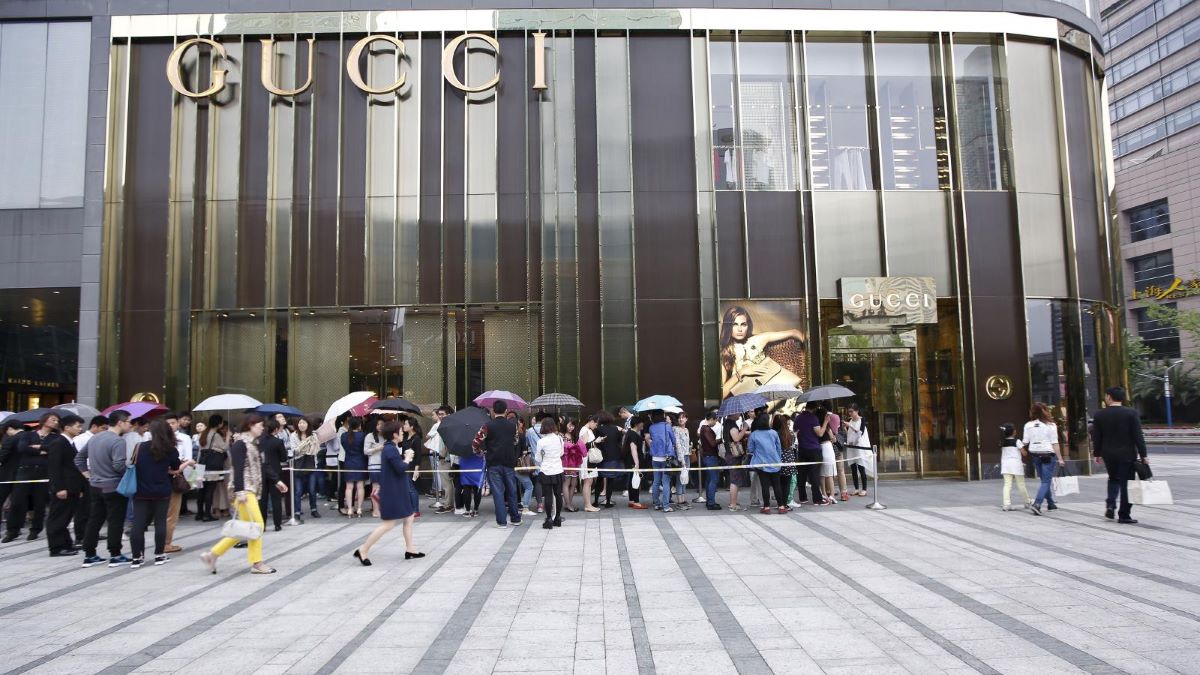Brand storytelling can be one of the most difficult tasks for any brand. It is more important than any other category for luxury brands. Gucci is an example of a brand that excels in this area.
The parent company Kering, one of the world’s leading luxury brands, released its annual results for 2021. Gucci reported that it had revenue of approximately $11 million, a 31% increase over a comparable report. It also achieved a record performance, exceeding those of 2019. Gucci’s growth rate is remarkable considering its size. Many of the top 20 luxury brands experienced strong momentum in the last quarter.
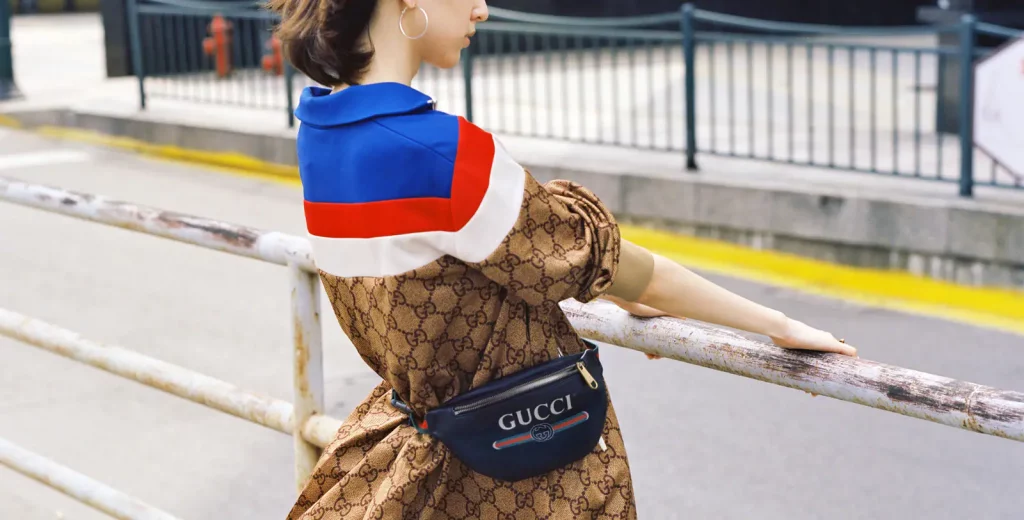
This was driven by the launch and 35% increase in sales at its directly operated stores. It also says Ridley Scott’s film, “House of Gucci” helped raise the brand’s profile internationally.
Gucci China: how has the brand succeeded in China’s competitive landscape?
Gucci’s success can be attributed to one of the most accurate brand stories in the luxury industry. Above all, Gucci is a bold and unabashed expression of individuality. Gucci’s story does not rely on the finest leathers or the most luxurious materials.
However, it does so better than many other brands. The brand focuses on something that is essential to consumers: how people feel compelled to meet the expectations of others, whether it’s their parents, friends, co-workers, or society at large.
These expectations include gender identification and what you should wear or how you should wear it. Gucci was the first brand to understand this sentiment. It provided a safe place for people to express themselves and celebrate their successes.
Gucci’s campaigns are a celebration of both individuality and customers. Gucci is not like other brands that talk about themselves or pat themselves on the back for being great, but instead talks about their customers. Every communication highlights how the brand empowers its customers.
Gucci focuses on building its public identity in Chinese social media
This brand has a reputation for telling great stories and creating extreme value. This aspect is crucial for Generation Z. Generation Z is the first generation of people to learn how to create their “personal brand” through social media. This makes Generation Z the first generation to have a public identity. If a brand’s story doesn’t match its positioning, it won’t be appealing to them. Gucci is the best brand in this area.

One of the most innovative among foreign high fashion brands
Gucci has also focused on innovation and inspiration. Luxury brands need to be perceived as innovative by their customers, which we have stressed many times. Luxury brands need to be seen as disruptors and influencers. Nobody wants brands that are boring. They create desire when they are inspired and excited.
Gucci is a firebrand in this area. Gucci was the first to ban fur. It has also led the largest sustainability program in the luxury sector. This goes beyond PR stunts and warm words. MX, a gender-neutral brand, has broken all the rules in the category.
Gucci is perhaps the most diverse brand in terms of communications campaigns. It embraces all ages and all expressions of race. Gucci has significantly disrupted this market by embracing diversity and inclusion.
The clever use of collaborations
Gucci has been open to collaborations on multiple levels. From its hacker project with Balenciaga to a 1970s-inspired collaboration with The North Face, Gucci is no exception. These partnerships give Gucci a sense of wonder, disruption and cultural relevance, further enhancing its reputation as one of the most inspiring and desire-driven brands.
Kai x Gucci is another collaboration that broke the internet in Asia. This teddy bear collection, created with K-Pop star Kai Exo (also known as the human Gucci), took the brand to the next level in critical Asian markets, especially China.
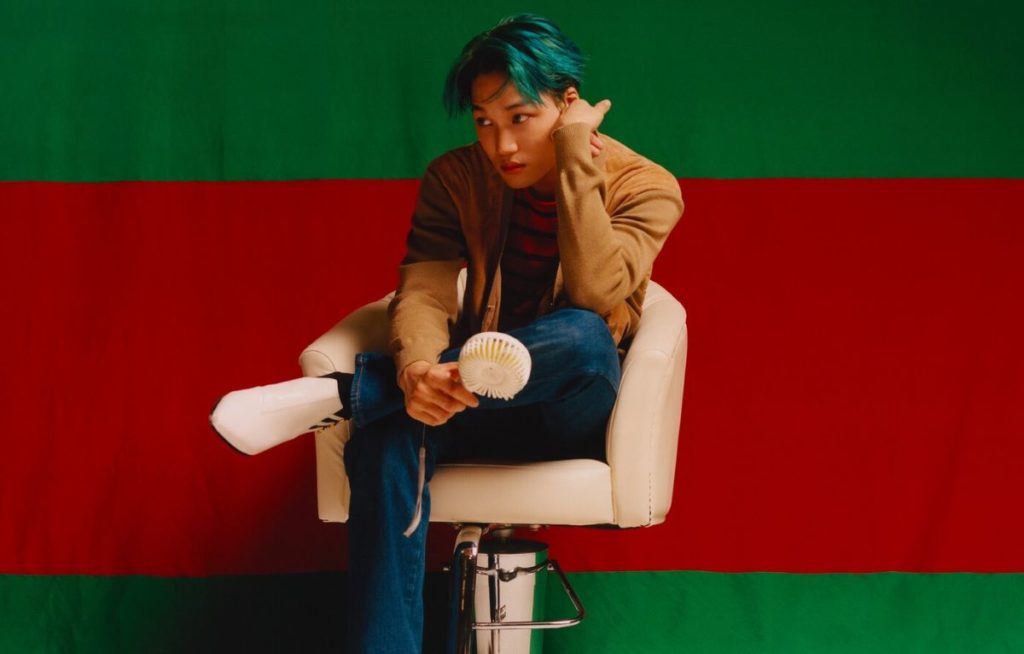
His brand’s story of unabashed self-expression was supported by a host of new products, including sex toy jewelry, at a runway show on Hollywood Boulevard attended by Macaulay, Phoebe Bridgers and Jared Leto.
Gucci’s many activities are closely tied to the clear narrative of its brand. Gucci’s true genius lies in its ability to execute a story with great precision and create extreme desire.
Staying on top of market trends with Gucci Run Sneakers
Gucci understands, that the market is changing and so are the shopping habits of customers all around the world. Covid-19 pandemic helped people swift towards more comfortable clothes and shoes, blurring the lines between sportswear or housewear and formal dressing.
Understanding the growing popularity of sneakers, Gucci contacted GMA, seeking professional consultation and our expertise on the subject, as they were about to launch new Gucci Run sneakers campaign.
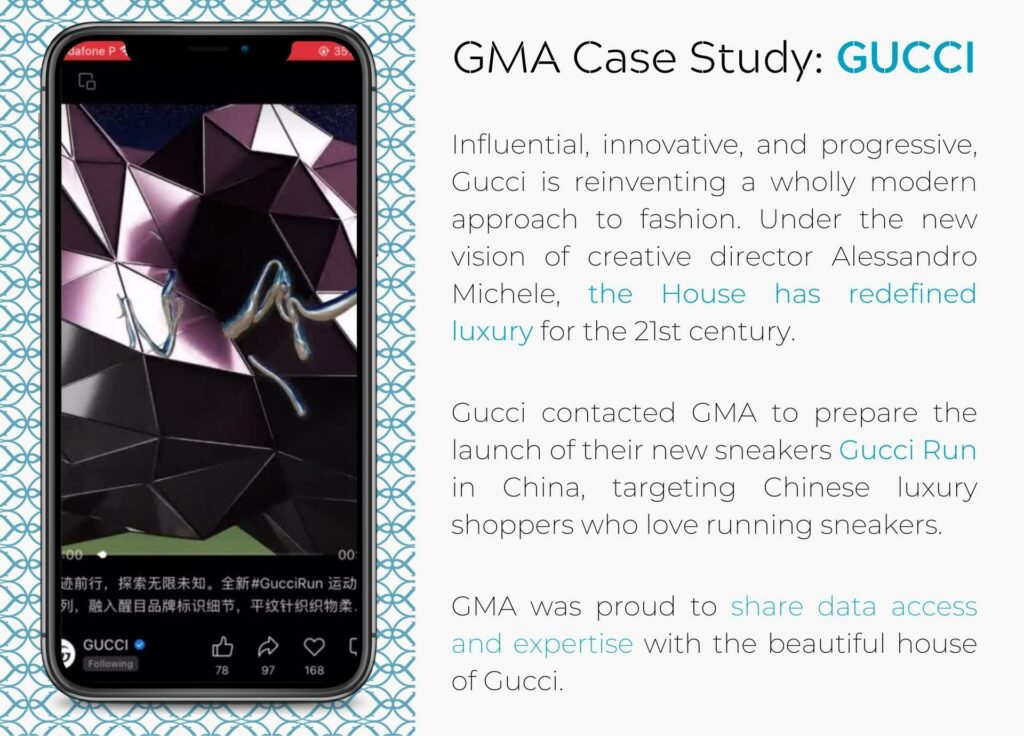
The campaign definitely caught on in China, bringing new customers among young Chinese generations that chose casual wear over formal one. Here you can see many posts about those sneakers on Little Red Book social media platform (and we can assure you that there are hundreds of user-generated posts about those shoes):

This should be the guideline for luxury brands. However, other brands still tell brand stories such as “our passionate employees use only the finest materials to create unique products.” They “sell a dream” but fail to identify that dream. If they talk about “best in class”, these words are only generic descriptions of the category. They are brand stories, not category stories.
The customer is the best way to define the brand story today. The most important question is, “What does the brand allow its customers to do differently?”. It seems like a simple question but a difficult one to answer. It’s not just about numbers. Nor is it about material and fundamental value creation, differentiation, and taking relevant consumer insights.
Gucci’s results, as I mentioned, are outstanding. These results show that Marco Bizzarri and Alessandro Michele understood the importance of the inspirational story of a luxury brand. The story of a brand can be described as an opera. Each element must be linked to the desired emotion and create a well-executed scenario. Gucci is a luxury brand to watch out for because Generation Z doesn’t like brands with bad stories.
Gucci is the year of the tiger
Gucci unveils its Gucci Tiger collection to celebrate the Chinese year, which was celebrated on February 1. It includes a variety of ready-to-wear and accessories that are inspired by tigers.
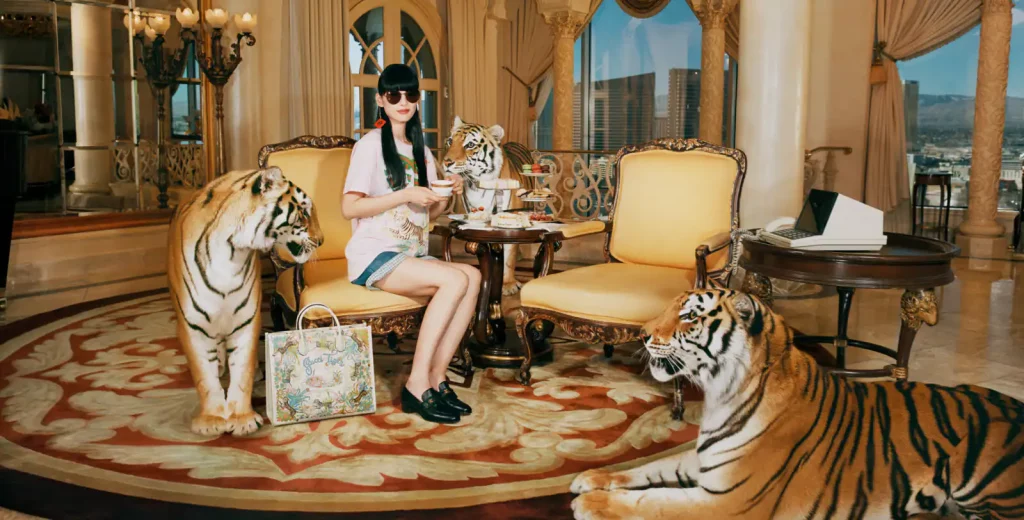
Creative Director Alessandro Michele has been fascinated by nature since childhood and continues to embrace it in all its glory. These passions are expressed through this collection of bold silhouettes, bright colors and exquisite prints.
Over the years, many fashion houses have used tiger stripes or other elements inspired by this animal. What makes the Gucci Tiger collection different from other collections? And what can luxury brands learn from Gucci’s unique approach to zodiac marketing?
Waking up sleeping tigers with the house’s archives
The new Gucci Tiger collection features a new print that has been reinterpreted from an archival design made by Vittorio Acornero in the late 1960s. Accornero is the artist and illustrator behind the house’s Flora pattern. The brand’s complete ready-to-wear collection includes everything from outerwear to jeans to dresses and shirts, with the tiger print set against a background of pastel flowers and plants.
Gucci’s 1970s collection featured animal and floral prints. The house also introduced its tiger head hardware at this time, which inspired the brand’s Dionysus handbag. Gucci accessories such as umbrellas, silk scarves and other tiger-patterned accessories have been available for a decade.
Michele became Gucci’s creative director in 2015. He created a “Gucci garden,” which is home to tigers and other species. To celebrate China’s most important holiday, Gucci reintroduced tigers — an emblem of strength and bravery in the context of Chinese culture. Gucci cleverly draws on its archives to connect its past and present, sharing its in-house heritage with Chinese fans.
Exploring the social ecosystems of Generation Z in China
Gucci has opened pop-up stores in Nanjing and Shanghai to further promote its CNY campaign. The Gucci Tiger is brought to life by creative director Alessandro Michele and photographer and director Angelo Pennetta. To create more stories about the precious Chinese value of family reunion and togetherness, a special scene was created with the brand’s global ambassadors including Chris Lee, Ni Ni and Lu Han.
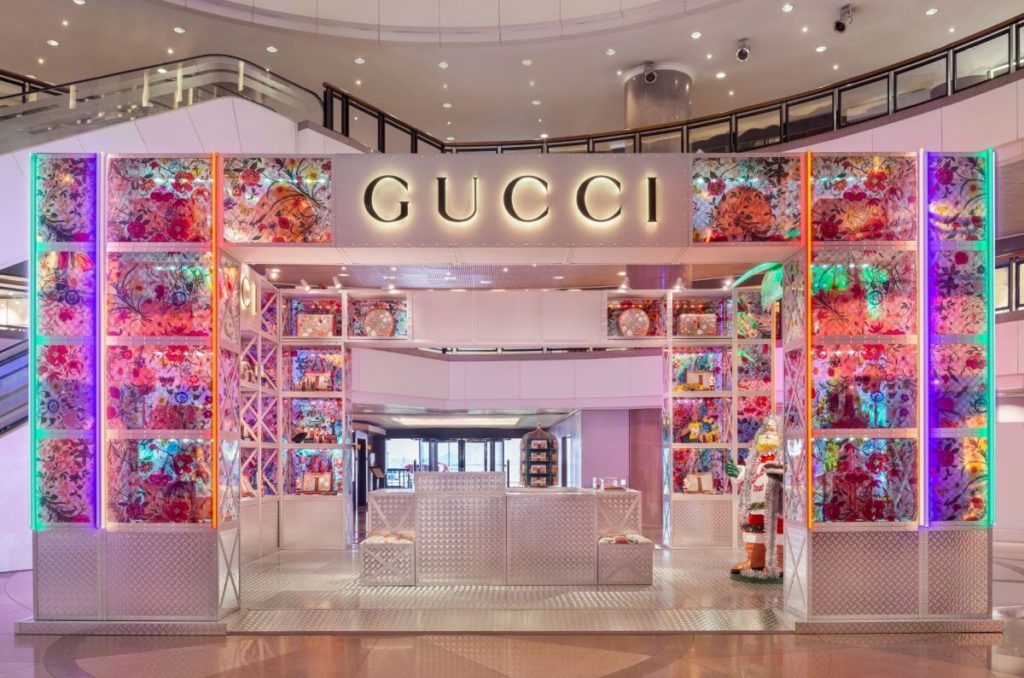
This campaign marks the first appearance of the brand ambassadors in the house’s CNY celebration. This has been a popular topic on Chinese social media. The campaign video reaches 25 million viewers on Weibo, while the number of #GucciTiger viewers reached 430 million upon publication. This is significant social traffic for luxury brand celebrity endorsements.
The brand launched its interactive and platform-specific digital initiatives with these celebrities. Gucci launched a challenge on Douyin to engage users through a filter that featured the Gucci tiger and floral prints from its collection. In just five days, the #Guccitiger campaign videos totaled 330 million views on YouTube.
The house also ran a campaign on Weibo where users could win virtual accessories exclusive to the campaign on their profile pictures. The hashtag for this campaign, #CuteTigerProfilePhoto, has garnered 240 million views on Weibo.
Gucci also launched a WeChat mini-program that allows users to access their predictions for the new year and personal product recommendations based on their horoscope. The brand has also released limited edition virtual red envelopes, which users can give to family and friends during the festival. WeChat users can win wallpapers, New Year’s greetings and red envelope covers by pressing the “shake” button and shaking their phone in WeChat Moment.
Incorporating sustainability
Gucci has aligned its Tiger collection with its commitment to creating positive change for the environment. Gucci has been carbon neutral throughout its supply chain since 2018. In February 2020, Gucci joined the Lion’s Share fund. This unique initiative raises funds to help endangered species and their natural habitats.
Through the Gucci Tiger product line, Gucci is also committed to the welfare of wild animals. Its watches are environmentally friendly, from the recycled steel case to the dial and strap. They are made from animal-free Demetra material, which is primarily sustainable, renewable and bio-based.
This product line also includes unique and themed packaging. It includes a collection of boxes, shopping bags and envelopes. There’s even a label with the Gucci Tiger print. The packaging is made of paper from responsibly managed forests, the handles are 100% recycled polyester and the ribbons are 100% organic cotton.
It’s clear that brands that put social responsibility first, like Gucci, will prevail in an age of digital connectivity and isolation.
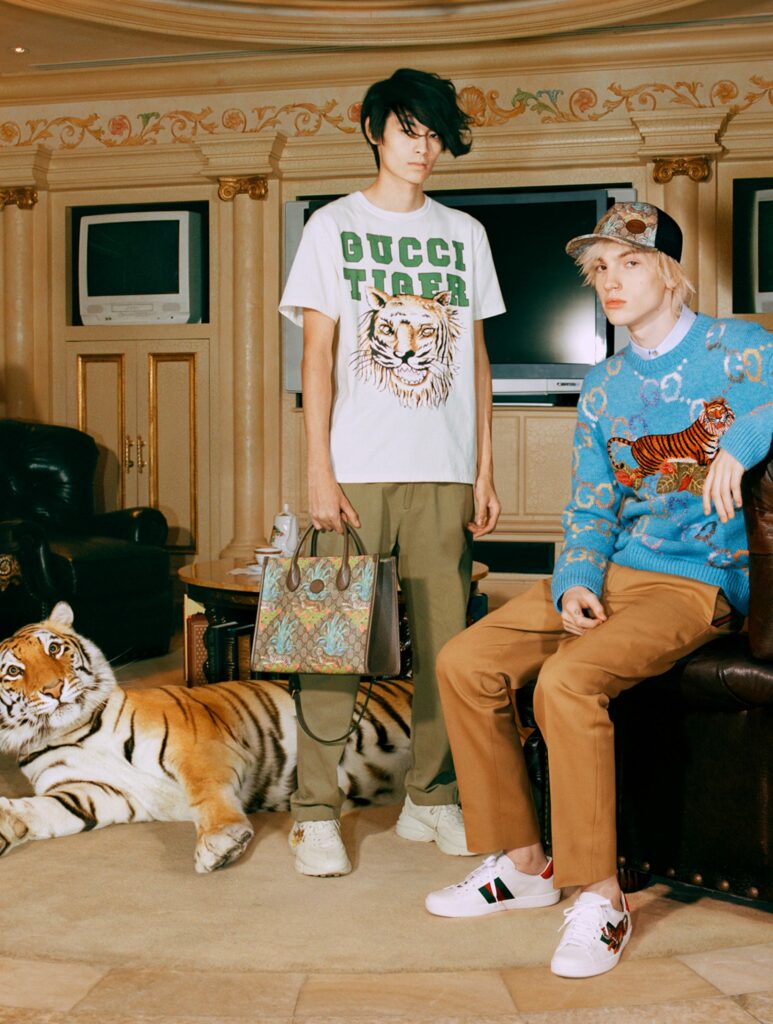
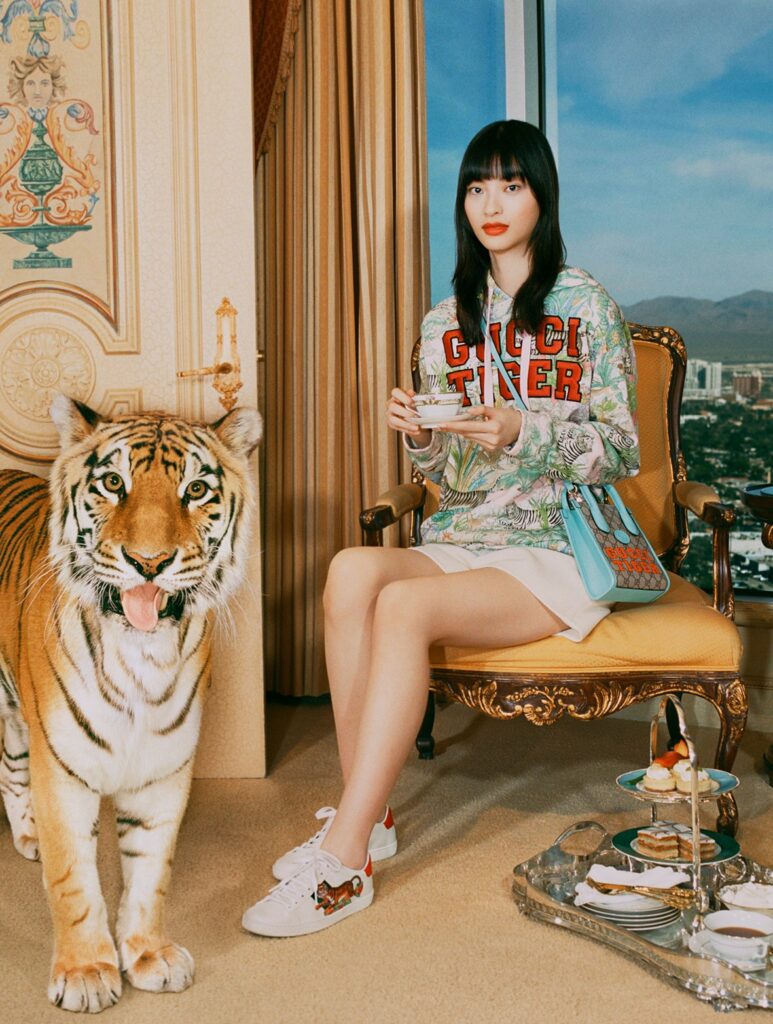
Gucci’s China strategy: what has Gucci done right to win China?
Guccio Gucci founded the brand in 1921. It still exists today. Guccio Gucci started as a small luggage manufacturer. The brand was mainly intended to produce luxury travel products for the wealthy classes in Italy. After 100 years of development, this brand has become a global luxury brand that offers a wide range of luxury products.
Gucci China is known for its extravagant, rebellious and luxurious designs. Its customers are mostly affluent members of generation Z who can afford to spend more and want to show their social status.

China has been one of Gucci’s most important markets since 2006. Gucci now has 40 stores in China, is well known on social networks and has a large customer base. Gucci is one of the most popular luxury brands in China after Dior and Chanel. Gucci’s success is a lesson that other brands can learn from. To understand the reasons for Gucci’s success in China, we analyzed Gucci’s strategy.
Gucci’s strategies in the Chinese market
Gucci has maintained its star status by regularly releasing new products, practicing multi-channel marketing, keeping an eye on the fast-changing Chinese market and constantly adopting innovative advertising strategies. Gucci’s three main strategies are to leverage WeChat’s micro-programs and cultural inclusion.
WeChat mini-programs that can be leveraged
In addition to creating online stores, Gucci has also launched two WeChat mini-programs (“Gucci Beauty Self-expression” and “Gift Card”) to provide unique experiences for users and allow Gucci staff members to interact with them one-on-one. This is a great way to increase brand loyalty and capture new customers.
- Gucci Beauty Self-Expression Mini Program: This is a fun-focused mini-program where users can upload their selfies to the program page and then use them to produce emojis with custom Gucci icons. This feature allows users to take a break from their daily lives and immerse themselves in Gucci culture.
- Mini Program Gift Card: The main page of this gift card is designed in a clean, minimalist style that reflects the brand’s elegance. This mini-program allows customers to purchase gifts for their friends. Customers can then attach a few lines of text to the virtual gift card. After receiving the gift card, their friends can redeem it at any Gucci store. It only takes a few clicks to make it all happen. This allows Gucci to demonstrate its cultural value of interpersonal attention. It also matches the shopping habits of today’s youth, who are “convenient, fast and direct.”

Collaboration with celebrities and KOLs
Collaboration with key opinion leaders is a necessity for luxury brands to succeed in China. It is also part of Gucci’s strategy. Gucci announced Xiao Zhan, a member of Chinese boy band X Nine, as its brand ambassador. In 2019, he became a star thanks to his role in the TV drama “The Untamed,” which is now available worldwide on Netflix. Gucci quickly rose to the top of the list of most talked about topics on Chinese websites, and its sales quickly increased overnight.
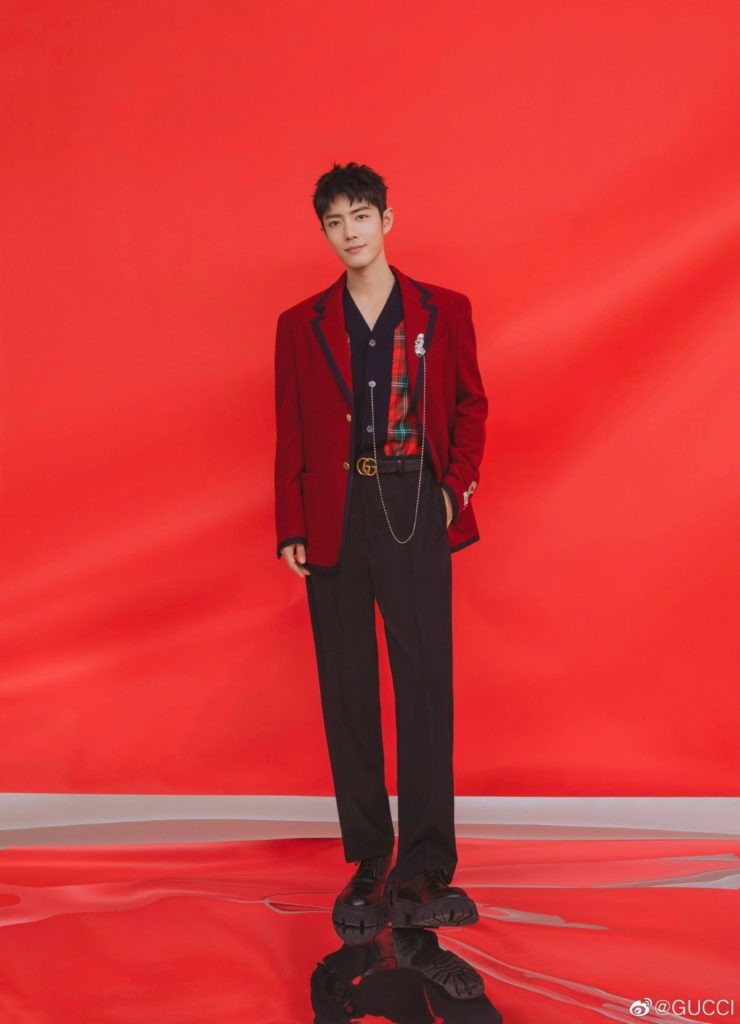
It’s clear that Xiao Zhan was chosen as the brand ambassador because of his popularity and his popular Kpop look.
Marco Bizzarri, CEO of Gucci, said that Xiao was chosen because of his strong mentality. Xiao was engulfed by cyberbullying during 2019 and disappeared from the public eye for nearly a year. He still strives to spread positive energy, despite the negative impact it had on his career and reputation. Marco Bizzarri was impressed with his positivity, perseverance, and determination and became a Gucci brand ambassador.
Cultural Inclusion
Gucci’s 2018 cruise campaign, Roman Rapsody, featured a diverse mix of local residents as models. The idea was to show the real Roman society. Sonia Zhou is a middle-aged Chinese lady who caught the attention of Chinese netizens. Sonia, a Chinese immigrant, is the owner of the Chinese restaurant Hangzhou da Sonia.
The “Roman Rhapsody” cruise campaign was not designed to attract Chinese customers, but to celebrate the non-conforming cultures and eccentricity that are Gucci’s core values. This campaign conveys affinity and cultural inclusion, as it is not common for foreign high fashion brands to use a Chinese woman as a model.
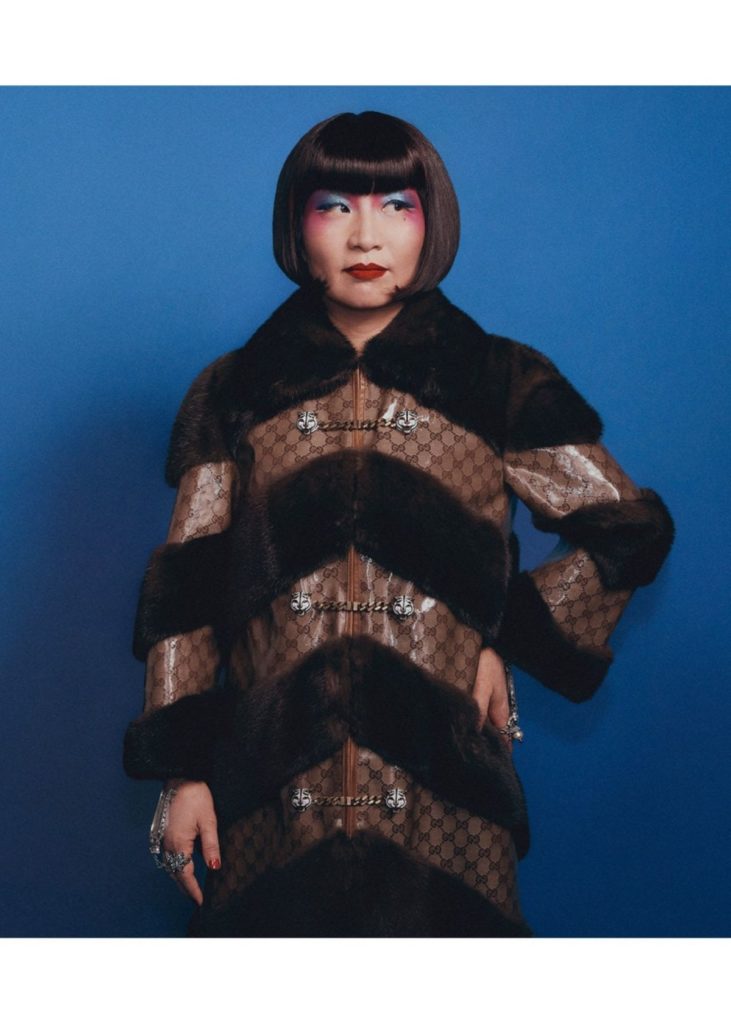
Sonia’s appearance on the fashion scene was immediately followed by posts titled “Chinese Pride on the High Fashion Scene” and “Immigrant Restaurateur Moved from Zhejiang to Gucci.” These messages were popular on Chinese websites. Gucci’s products saw sales skyrocket and were at the top of the hottest topics on Weibo.
Gucci’s success during the pandemic is due to its online marketing
Gucci is not the only luxury brand that has suffered from the ongoing pandemic in China. Customers are unable to purchase luxury goods due to travel restrictions and blockades that continue to be put in place. According to Kering (Gucci’s parent company), Kering’s annual financial reports for 2020 revealed a shocking 83% increase in revenue in Asia Pacific, compared to a 34% decrease in Western Europe. It is worth mentioning that Gucci’s strategy is the biggest driver of such a remarkable growth rate.
Gucci is putting a strong emphasis on online marketing during the pandemic. Gucci started launching official accounts on Wechat and Weibo in the early 2020s. These included Douyin, a short video platform, and Little Red Book, a social networking/ecommerce platform (Xiao Hong Shu ).
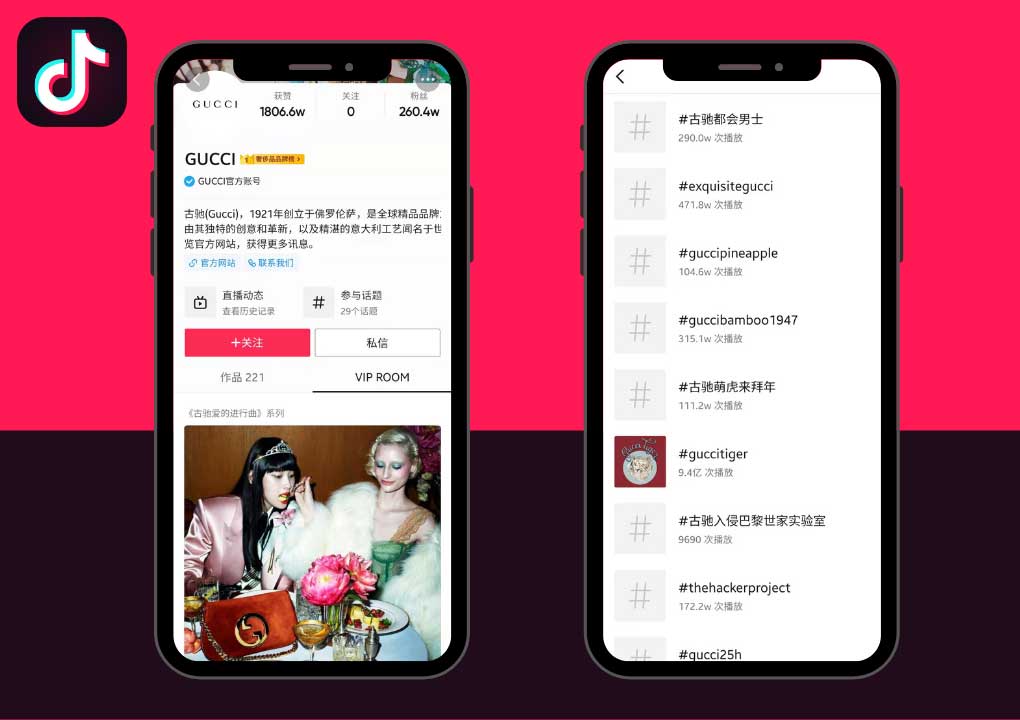
Gucci wanted to attract attention and stimulate public discussion through curation of social network content. Gucci launched a virtual campaign on July 30, 2020 to celebrate Chinese Valentine’s Day. It featured the GG apple collection. The design was composed of two interlocking red letters Gs. It was inspired by the phrase “you are the apple of my eyes”. Gucci created seven short films with an open ending and invited the audience to finish them for Weibo. These videos have been viewed more than 1.5 million times thanks to the clever way Gucci engaged the audience.
Gucci also posted funny B-rolls of the short films on Douyin, which sparked discussions among the online audience. Gucci invited Gucci actress to introduce the collection live and post product details. As many as 126,000 people viewed the hashtag “Gucci Qixi” on Little Red Book.
Key takeaways from Gucci’s China strategy
- The brand’s history is emphasized
- Gucci incorporates sustainability
- Mini-programs were launched through WeChat to help shoppers better connect with them.
- Gucci China partners with celebrities who have depth and appeal to young Chinese.
- Gucci shows its cultural inclusion by featuring models who are not standard European beauties but members of the community.
- Gucci China is now preparing its sales for the future through digital.

